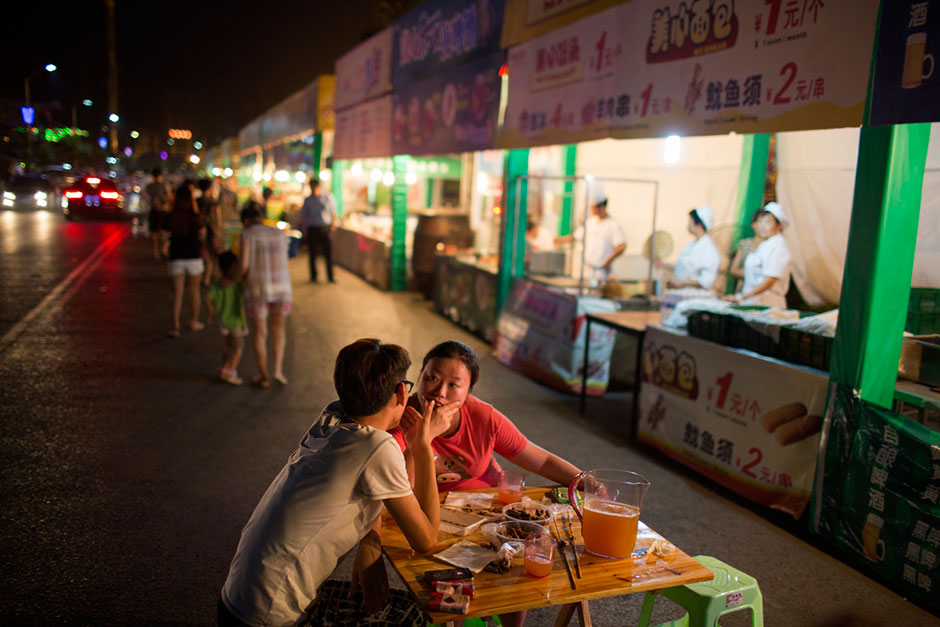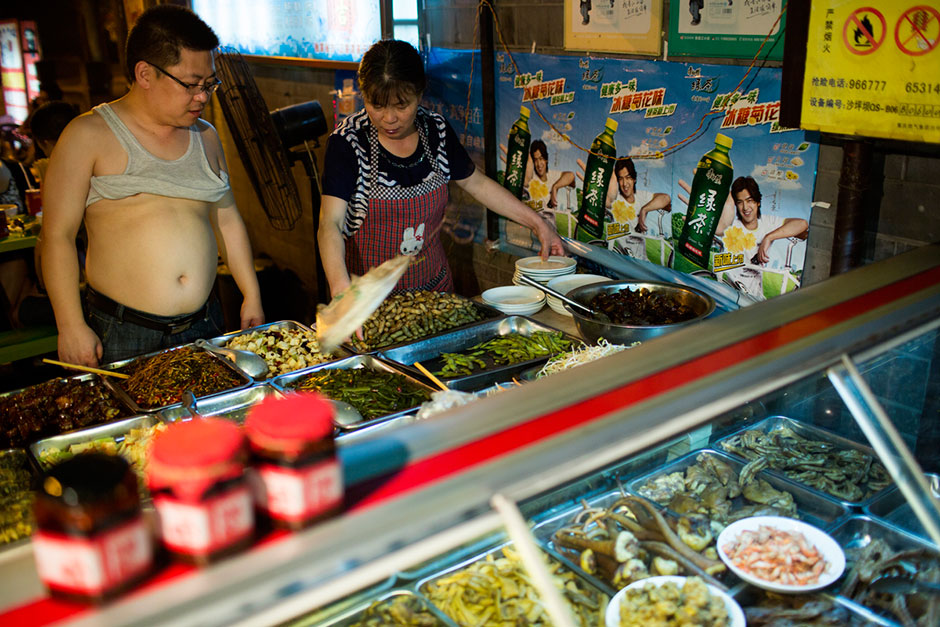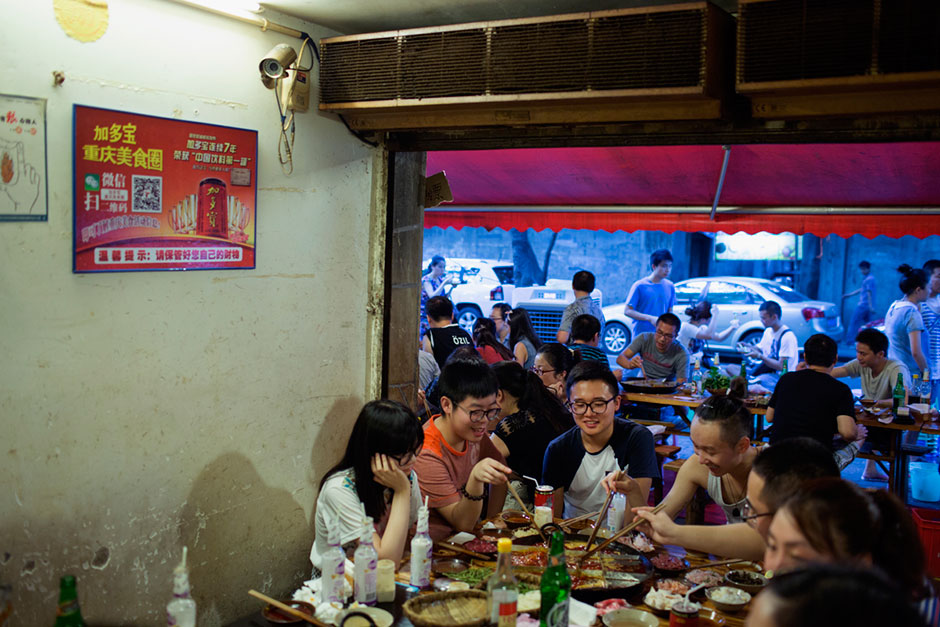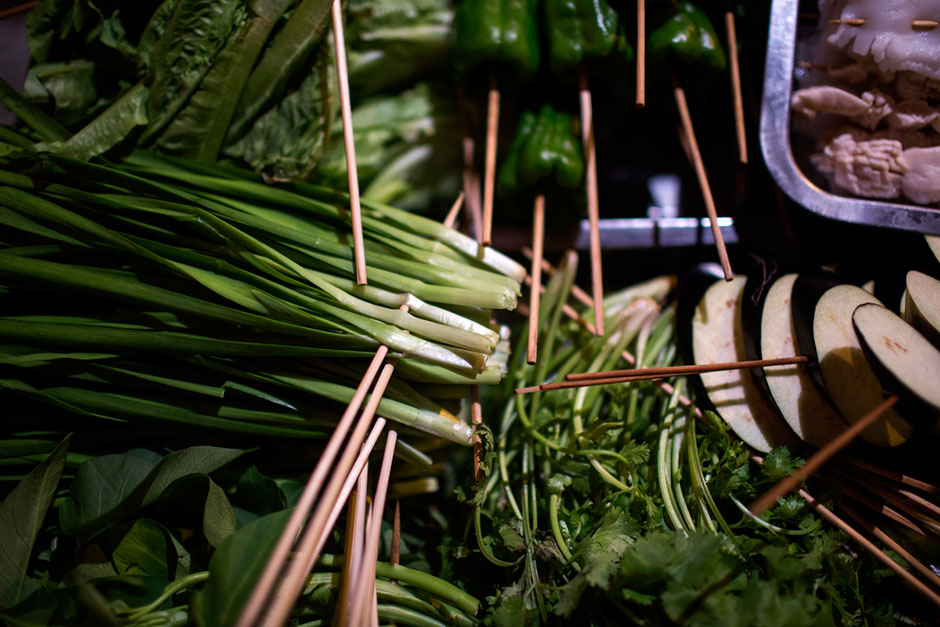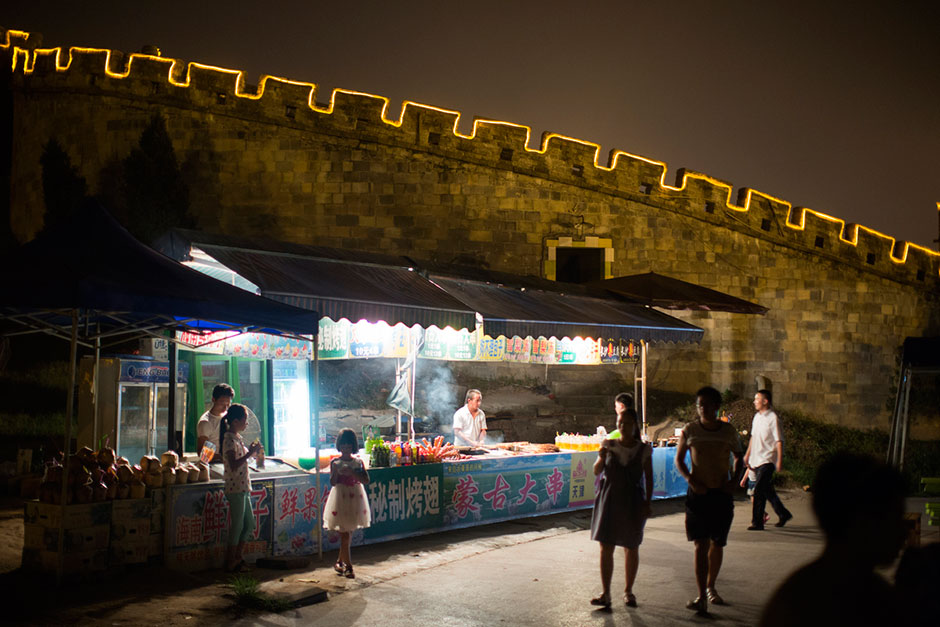Eats on the Street
Photos of Chongqing’s (Hot) Streetfood
It doesn’t matter how many times you tell the cook not to add hot peppers, anything you order in Chongqing is going to be mouth-numbing and hotter than anything you’ve ever tasted before. It will be good, but it will be hot. From hotpot joints and street-corner barbecues to cold noodles served out of buckets dangling from a bamboo pole, Chongqing’s street vendors operate late into the night. You’ll be lucky to get a table at the restaurants on Tiyu Road, an area in Chongqing’s central Yuzhong district and ground zero for the city’s street food scene. But just about every little road throughout the city has a few cooks that set up shop on the street. In the morning, you can find savory fried dough, rice porridge, and pots of steaming hot “flower” tofu, ready to be garnished with an assortment of beans, nuts, herbs, and, of course, fiery peppers.
But it’s when the heat of the day begins to cool that vendors wheel their carts to street corners and the edges of plazas to prepare for city’s nightly feasts. Last summer, when these photos were taken, Shibati, the historic “18 Steps” neighborhood built around a staircase, had been scheduled for demolition and redevelopment. The street vendors were beginning to leave from the area. Near the ancient town of Ciqikou, the tourists disappear at night and shaokao, or grilled meat, vendors fill up the sidewalks. In Shapingba, street vendors fill the open areas near Chongqing University’s gates. But in Deyi World Plaza, one of Chongqing’s glittering club and shopping areas, independent street vendors have given way to franchise kiosks. No matter where you go, though, you can get your spicy food on the street late into the night. Most vendors close up shop just before dawn.




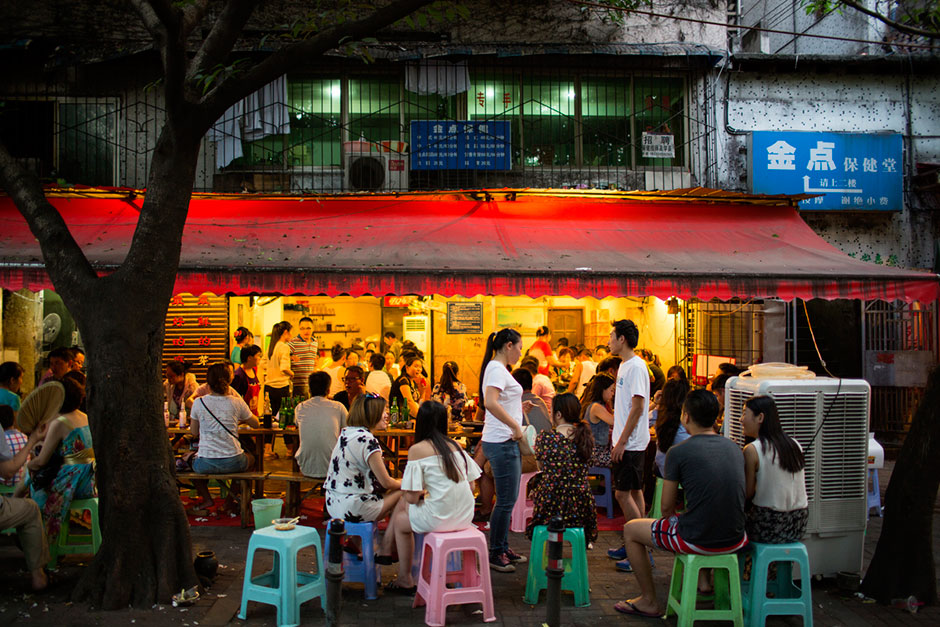
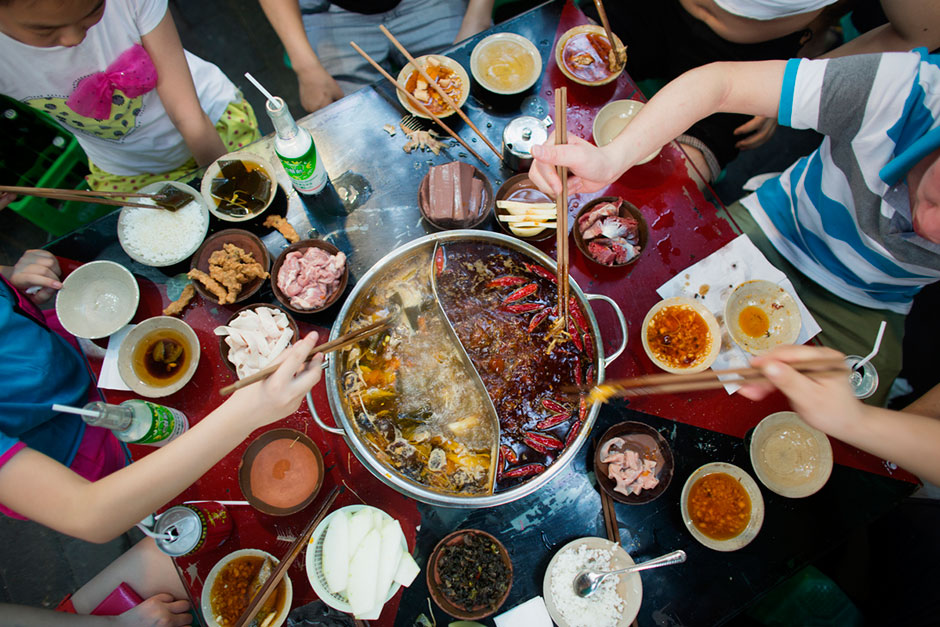
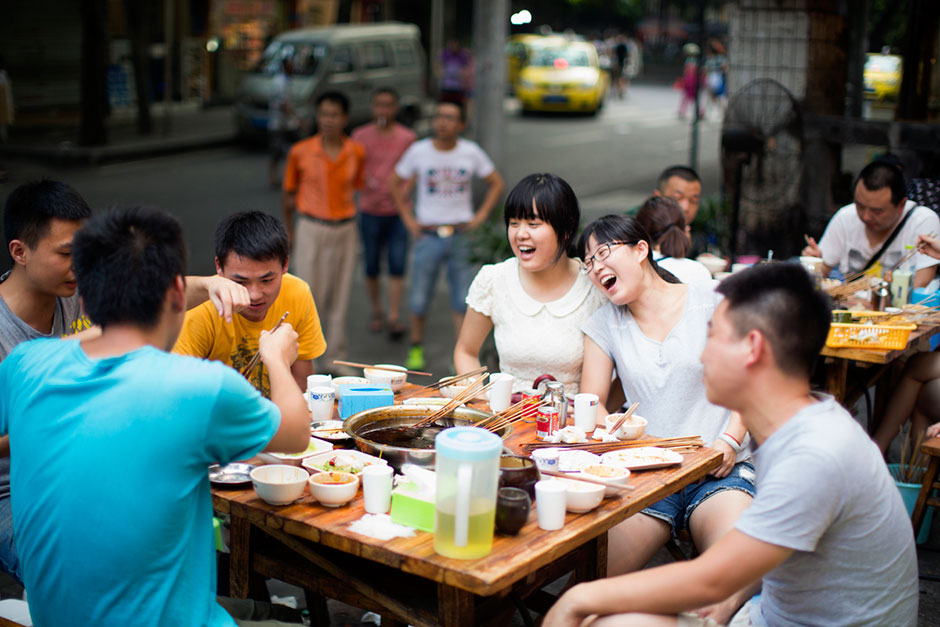
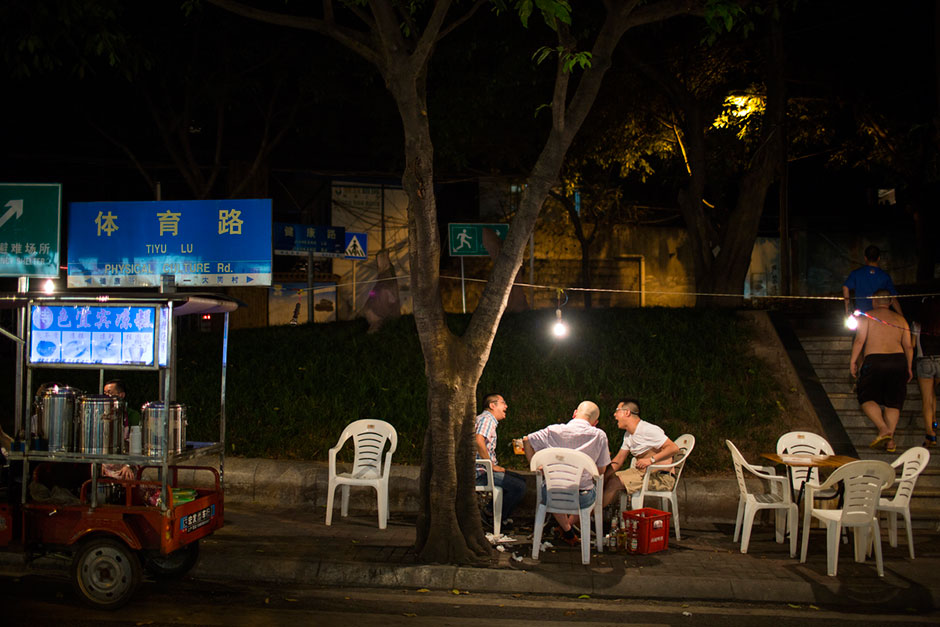
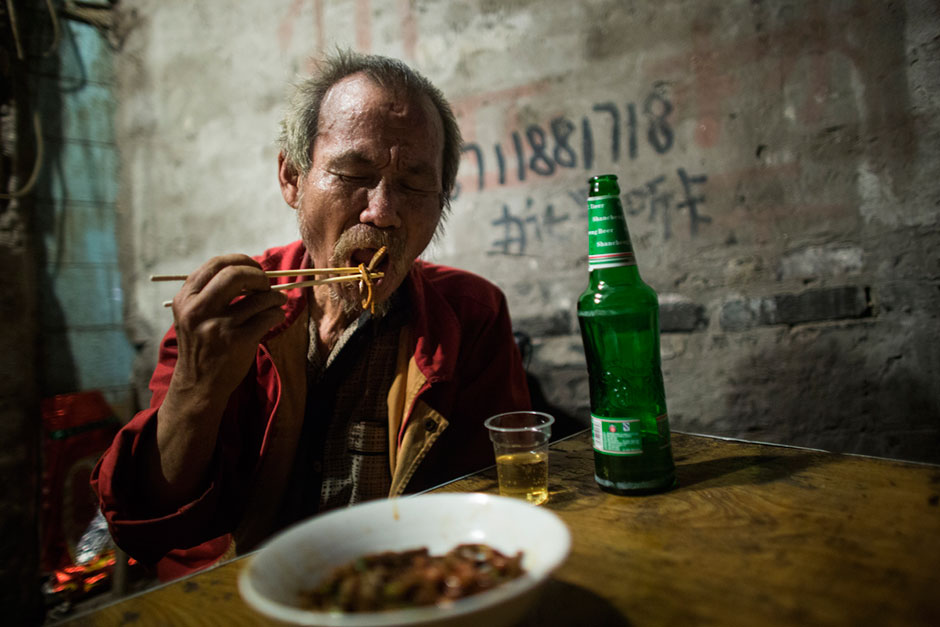
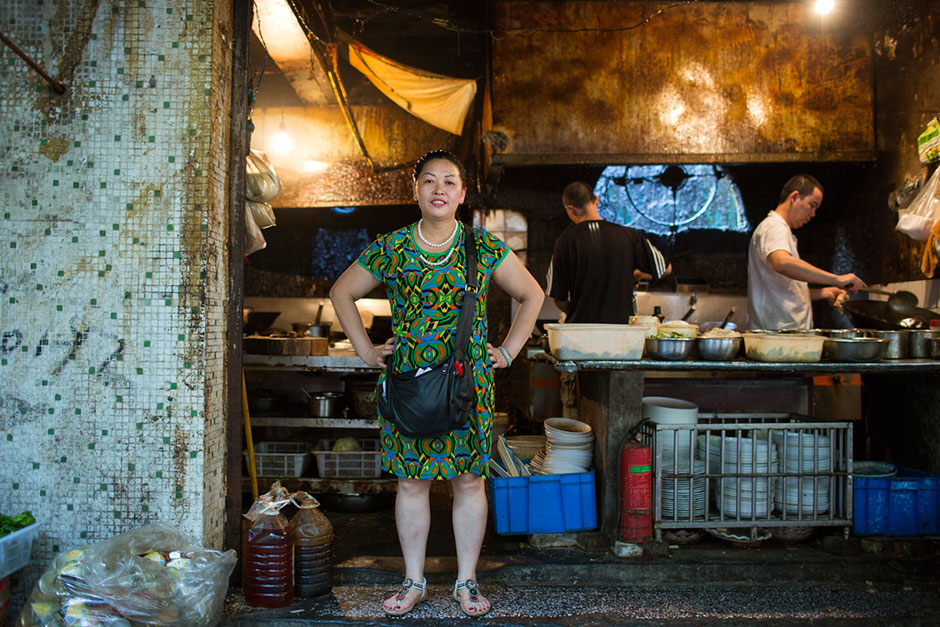
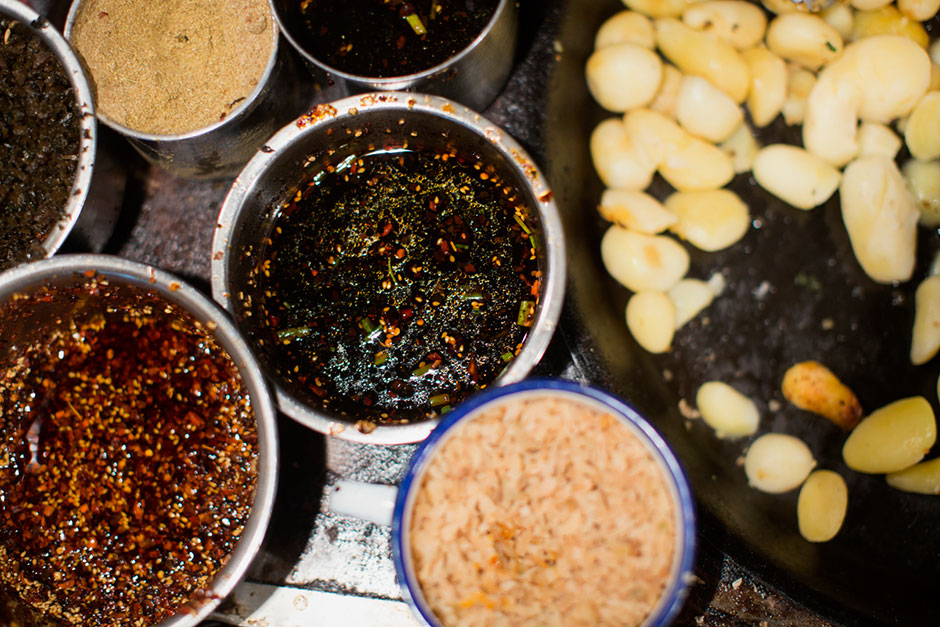
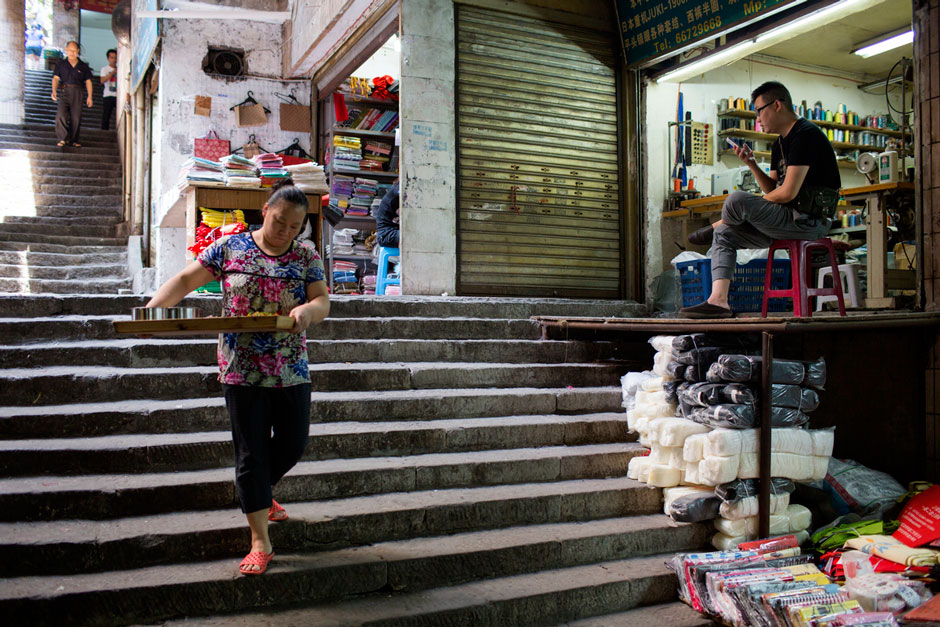
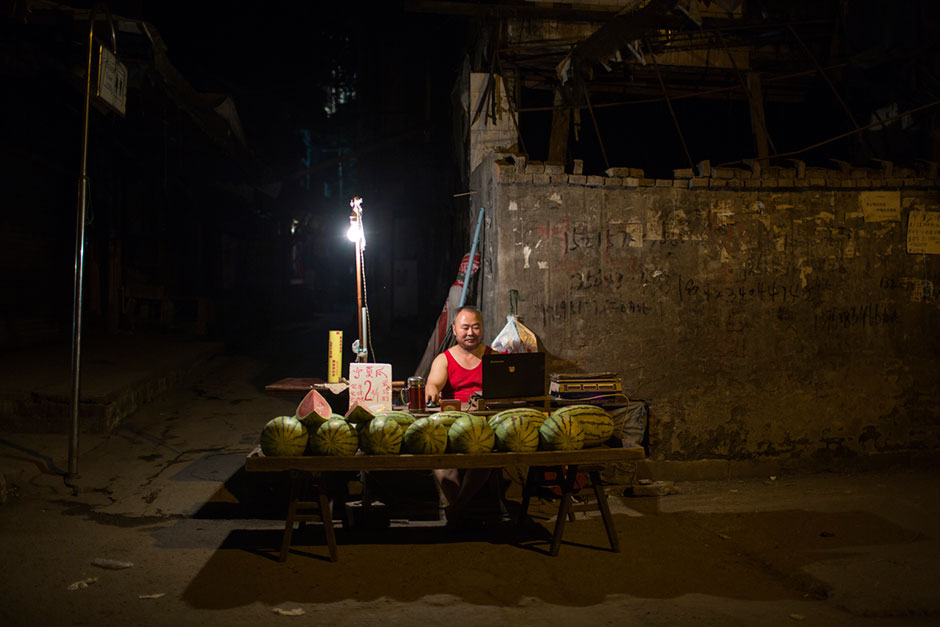
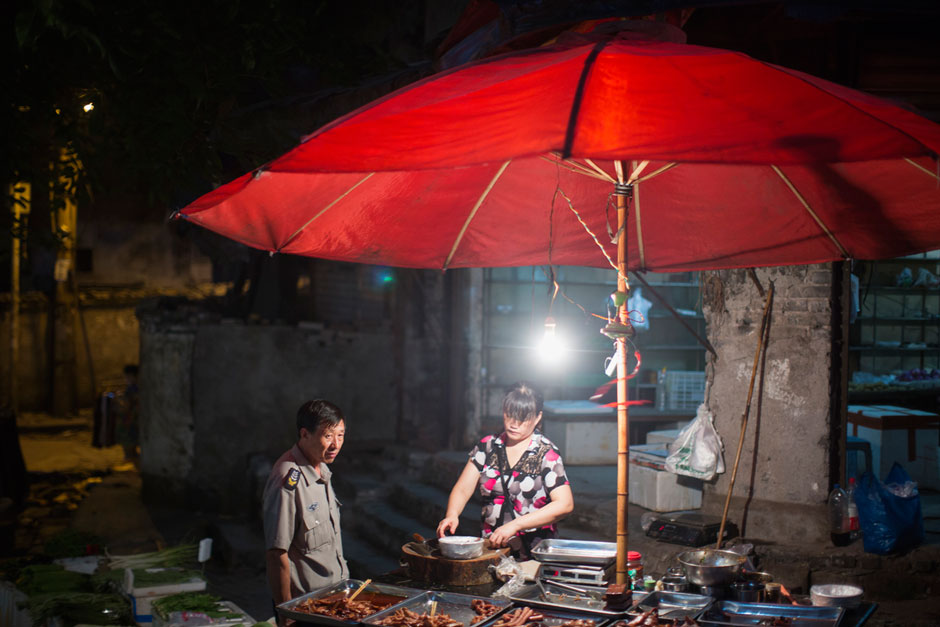
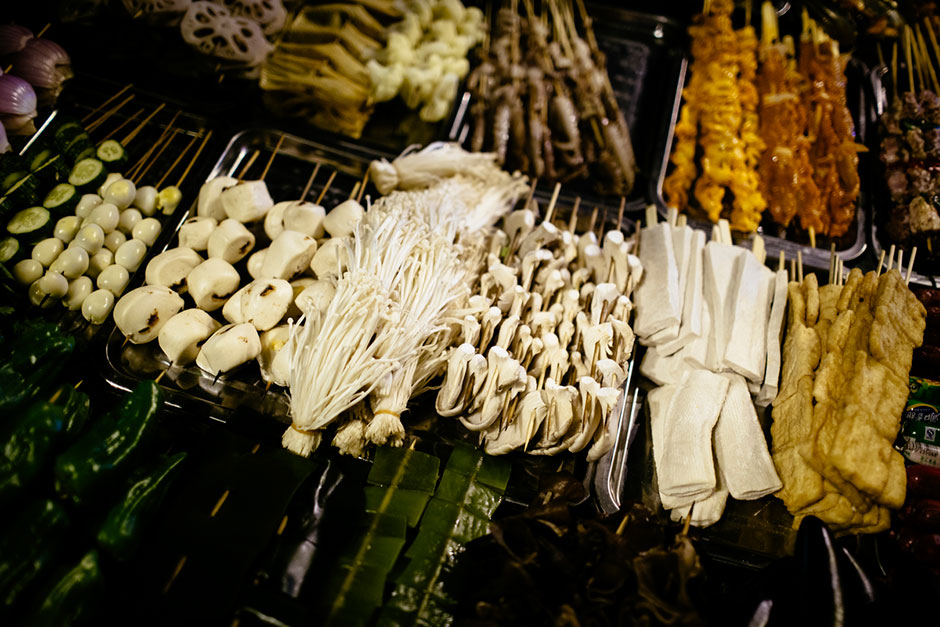
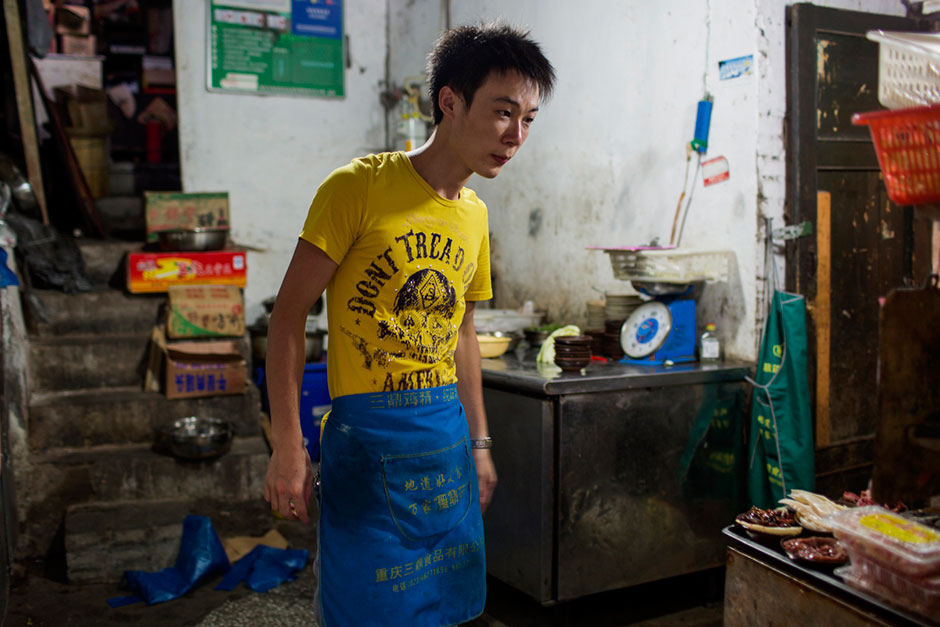
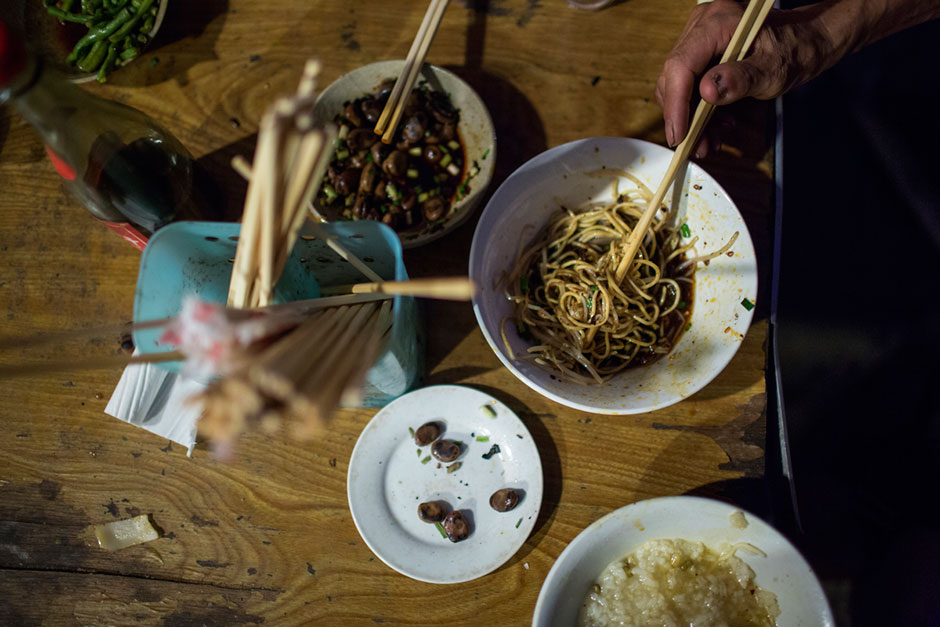
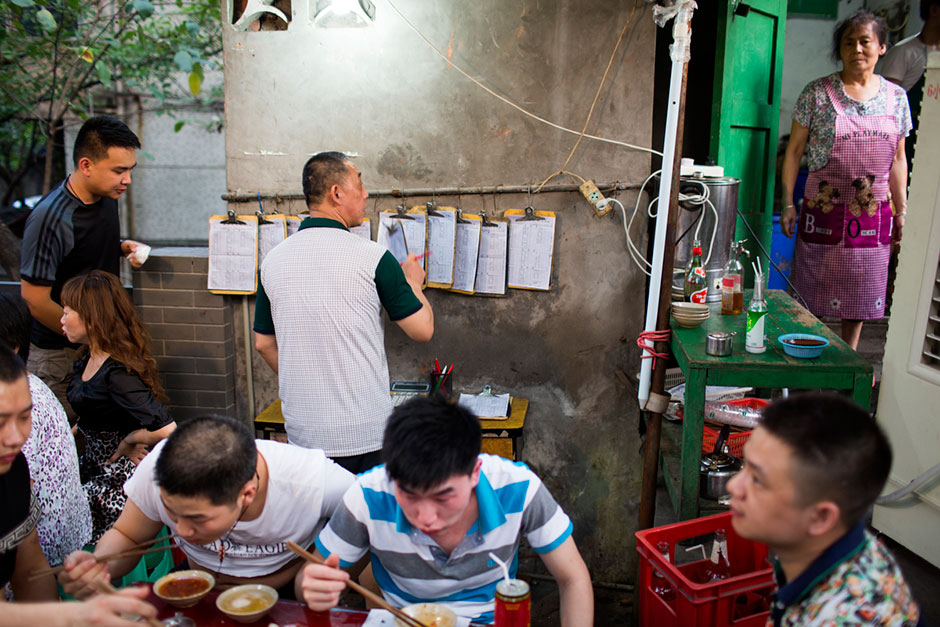
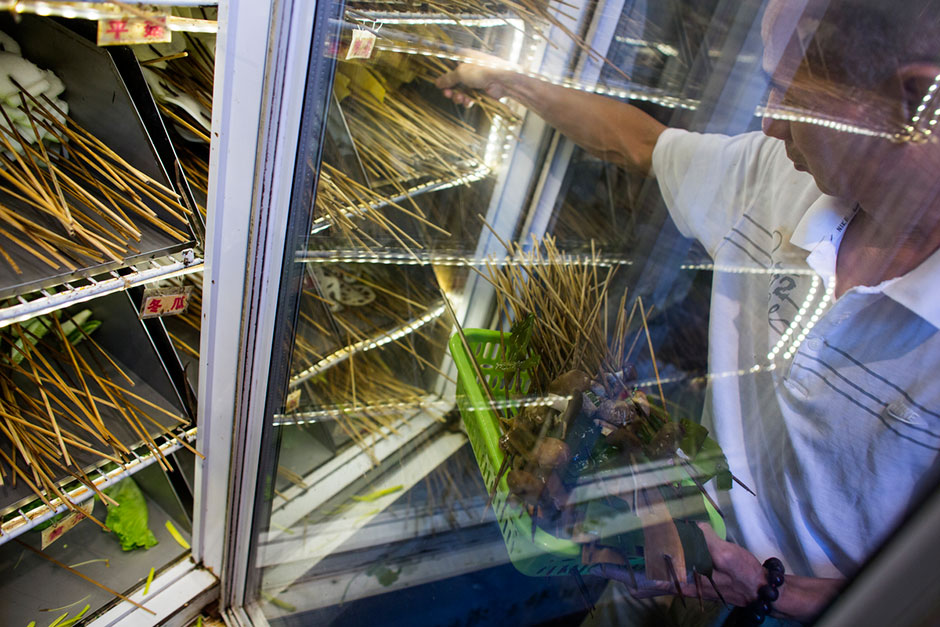
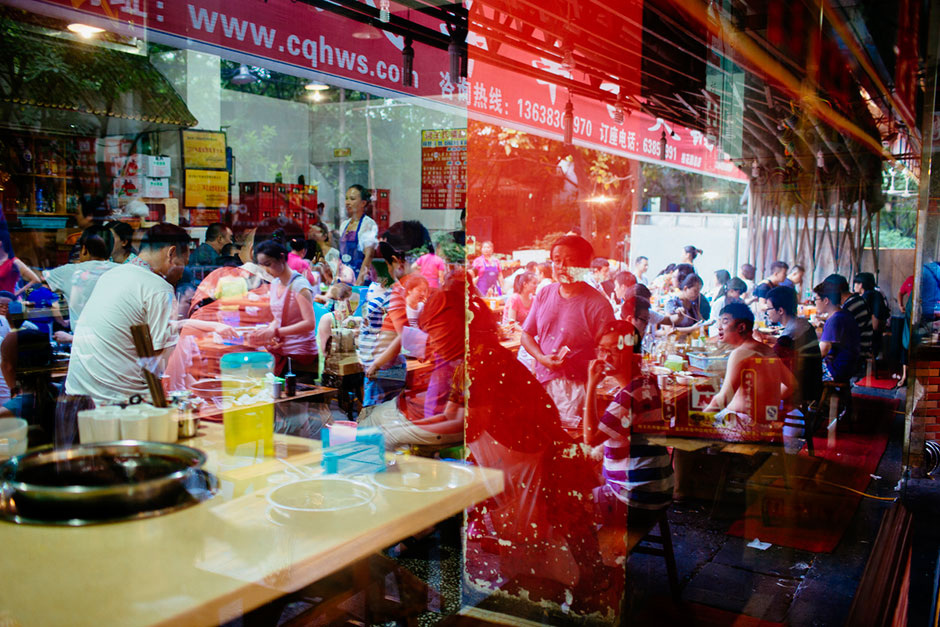
![The group at the end of the table eats hotpot from a nine-section bowl, a Chongqing specialty. Though they live in the neighborhood, members of the group said that this was the first time they’d been to Gang Shan Zhazha because the line is usually too long. Their favorite ingredients of the night were cow stomach, cow intestine, and duck intestine. Xiao Feng, seated at the end of the table, said “We [Chongqingers] like hot food, but this is very spicy for us.”](https://www.chinafile.com/sites/default/files/msb-440286mod.jpg)
